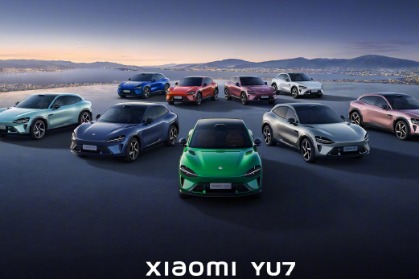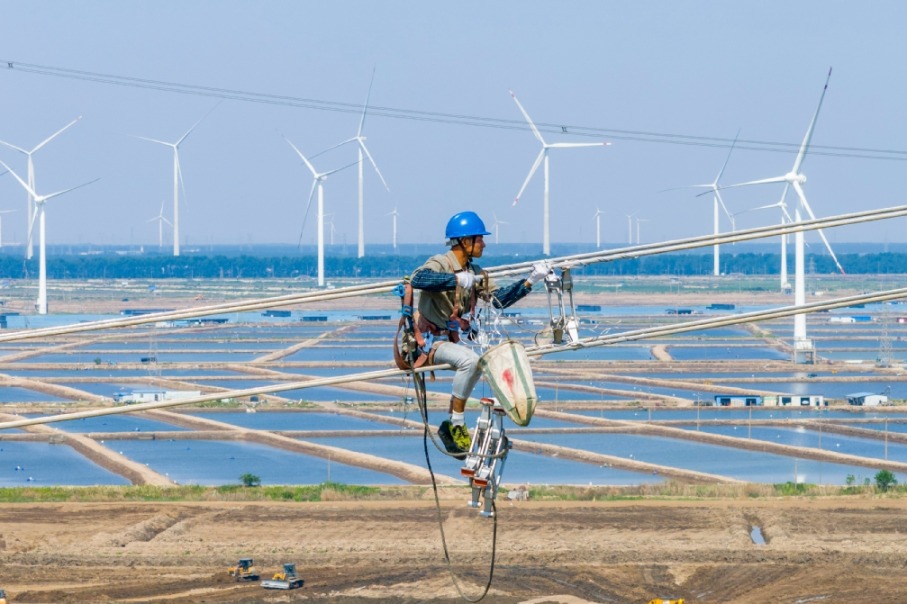Asian giants can 'work as one'

 |
| Lenovo’s logo at the Chinese company’s Indian branch in Bangalore. The company, which took over IBM’s personal computer arm in 2005, now has a bold plan to surpass all its competitors to become the largest player in India by 2014.WANG XING / CHINA DAILY |
China and India have the potential to become economic giants if they work together
When Amar Babu first joined Chinese computer maker Lenovo Group in India in November 2007, what he faced was the aftermath of a typical business failure: Lenovo's local market share had dropped by nearly a half, top management had quit the company and local sales partners were demanding payment.
But that did not prevent the veteran executive from turning India into one of Lenovo's most successful overseas markets.
During the past two years, business for China's biggest personal computer (PC) maker has not only survived the financial crisis but also won market share from rivals. Its market share in India has risen from about 5 percent in 2008 to more than 9 percent in the last quarter of 2010, ranking it fourth after HP, Dell and Acer. The Chinese company, which took over IBM's PC arm in 2005, now has a bold plan to surpass all its competitors to become the largest player in India by 2014.
"If we can be a strong No 1 in China and, giving the similarity between the two countries (China and India), why can't we be the No 1 in India?" asks Babu, managing director of Lenovo India.
He says because India is "a little behind China" in terms of economic development, market penetration and maturity, many of Lenovo's successful experiences can be applied to India.
As part of its global strategy to steer away from relying on advanced markets such as the United States to fuel overseas growth, Lenovo started to focus its expansion on emerging markets such as India and Russia after its business in the mature markets was hit hard by the global financial crisis in 2008.
During the following years, Lenovo has successfully employed tactics that have made it China's PC market leader, including offering colorful models and products that are cost effective and using retail franchisees that have insight into their individual markets.
Although India is the world's ninth-biggest PC market, Babu says the country has huge potential for growth due to its vast population, growing numbers of young people and relatively low PC penetration.
"If you take what China was seven years ago, maybe that's what India is today," Babu says. He says the subject he often raised with his Chinese colleagues was: "Tell me what you did seven years ago."
Discovering India
India and China are the world's most populous countries and together account for more than a third of the world's population. The two countries also have a history of conducting trade and cultural exchanges over thousands of years.
However, most Chinese enterprises did not realize the scale of India's importance until the latter part of the 20th century. And most of the big Chinese companies did not find success until after the year 2000.
Chinese telecom equipment maker ZTE Corp, for example, entered India in 1999, but the company did not win any orders until 2002.
Then, from 2004 to 2009, ZTE's turnover in India grew from $100 million (77.3 million euros) to nearly $1 billion, making India ZTE's largest overseas market and its biggest market after China, says D.K. Ghosh, chairman of ZTE Telecom India.
"By being manufactured in China, our products can be 25 percent cheaper than our rivals," Ghosh says. "We expect our business to grow at the rate of 30 percent annually and become one of the top two players in India in the next three years."
According to research firm Analysys Mason, ZTE is the fourth-biggest player in the India telecom equipment market, after Ericsson, Huawei and Nokia Siemens Networks. China's second-largest telecom equipment maker now has about 3,000 employees in India, of which 1,000 were employed in 2009.
Last month, the Chinese government approved ZTE's plan to increase investment in India. Ghosh says he expects ZTE's business will be $1.7 billion last year, an increase of about 70 percent compared with 2008. He says the new investment will mainly be used to build factories and other facilities in India.
Complementary structures
Adopting different economic development patterns, China and India have built up their own positions of strength in the world economy since instituting economic reforms. Over the past 30 years, China established itself as a powerhouse in manufacturing and the construction of infrastructure, while India became a specialist in software and IT services.
"The economic structures of China and India are in fact more complementary than competitive," says Peng Gang, commercial counselor of the Chinese embassy in India. "If we could combine China's advantages in hardware and India's in software, for example, we could make a real difference in the world."
According to official figures, China is India's largest trading partner. Bilateral trade reached $61.76 billion last year, up from $42 billion the previous year and a 30-fold increase since 2000.
On the back of that trend, especially after the financial crisis during which the US and European countries struggled with the economic downturn, more Chinese have chosen to turn their eyes to their emerging neighbor.
Despite the increasing economic ties between China and India, the political relationship between two of Asia's biggest powers is still "very fragile, very easy to be damaged and very difficult to repair", says Chinese ambassador to India Zhang Yan. Issues such as territorial disputes and employment visas often disrupt normal communication between the two countries.
For businessmen such as Ghosh from ZTE, the best solution to solve that problem may be commercial cooperation.
"India and China are not enemies. Our relationship should not be India versus China but India and China," Ghosh says. "If India and China work as one, we can create an economic tsunami in the world."
Today's Top News
- Nepal's hydropower a climate change solution
- UN Charter still guiding compass of humankind
- Leaders pledge to strengthen Sino-Senegalese relations
- China, Ecuador to support each other's core interests
- Details on trade talks confirmed
- Bolder steps likely to boost demand






























